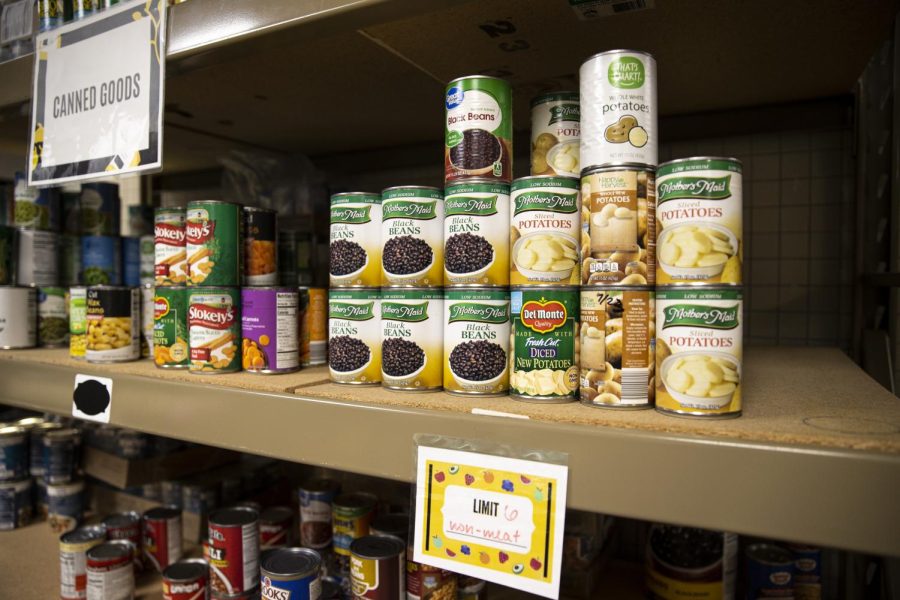Iowa City community wrestles with rising food prices
Some Iowa City community members have been struggling with food prices because of the recession. The average price of food has increased 10.1 percent in the U.S. over the last 12 months.
Canned goods sit on a shelf in the food pantry at the Iowa Memorial Union in Iowa City on Sunday, July 10, 2022. A sign enforces a limit on how many cans a pantry user can take.
July 12, 2022
This is story is part two of a series exploring the impact of inflation on the Johnson County area.
Record-high food prices are impacting Iowa Citians this summer.
The average price of food has increased 10.1 percent in the U.S. over the last 12 months ending in May 2022. This is the highest food prices have increased since February 1981, according to the U.S. Labor Department’s Bureau of Labor Statistics.
The increased food prices have made it difficult for some local families to get the food they need. The Iowa Memorial Union (IMU) Food Pantry said it is very limited on food now that the prices have shot up.
Shane Doughty, who helps oversee the food pantry, said the high costs have made it difficult to get quality food for families.
“We had a huge budget cut now that our [COVID-19] funding ended,” Doughty said. “With these prices, our budget isn’t going to last, and then all we can rely on are donations to get people enough food.”
With the help of the Hawkeye Area Community Action Program, an organization that provides food access in east-central Iowa, the IMU Food Pantry is able to get fresh food from stores. However, some of the food from the store is near its expiration when the pantry receives it.
Doughty also said because food prices have risen, there have been more people coming to the food pantry to save money.
Doughty said the pantry gets 80-100 people every week, up from the 40-50 per week from last year.
RELATED: Iowa City locals struggle with high gas prices this summer
Doughty predicts this number will keep growing if prices continue to rise. With the school year approaching in less than two months, Doughty also thinks the number will grow with more college students on campus.
Some students have already been using food pantries as a source of affordable food. University of Iowa graduate fellow Meysoon Quraishi said she’s gone a few times to get cheaper produce.
“I’ve been trying to go to the cheapest grocery stores in town to avoid the high costs, but there are hardly any options to find cheap food besides fast food,” Quraishi said.
Quraishi said she goes to a UI dining hall whenever she can so that she doesn’t have to buy groceries.
Quraishi said she has been forced to budget almost everything she eats. She said she hopes prices will be regulated in the future but doesn’t feel like that’s going to happen soon.
While grocery shopping, Peter Fox, a retired economics professor, said he’s also had to cut out food from his budget, including meat and sweets.
“I have to save that money for food I actually need now,” Fox said.
Fox said it’ll likely be a while before prices go back down.
“Typically, once prices go up, they don’t go down for a long time. I’m not sure when they’ll go down, but it all depends on supply and demand, and it’s not looking like the demand for food is going to go down,” Fox said.
In order to cut down on spending at the IMU Food Pantry, Doughty said, they’re trying to rely on donations.
“I know everybody’s dealing with this, too, but if people are willing to donate or volunteer, any little bit can help someone,” Doughty said.



